OddCameras.com
Linhof Standard Graflok (modified)
This is a Linhof Standard 9x12 camera from 1936. A full description of the original camera is here.
Compared to 4x5 cameras, it's small and lightweight. As 9x12 film is
still available, the slightly smaller format is no major disadvantage.
It has a Linhof revolving back, a big advantage that the Graflexes
don't have.
As I'm into Instant photography, I wanted a real camera that could take
the Lomo Graflok back. I first opted for a 3D-print solution for 9x12
cameras presented here,
it works fine, but feels a bit flimsy for field work. So in the end I
opted for a real Graflok back, a spare part that came from a Graflex
Crown Graphic. My French repairman friend reduced the frame to the
minimum and fixed it to the Linhof. He also adapted the distance scale
to the 25mm offset of the Instax back, so that you can work without a
ground glass in case of. He also made a new scale for ordinary film
setting if you need it.
The size of the adapted camera folded is 16.3 x 16.3 x 8.5 cm (all
protruding parts included), a very compact camera, smaller than a
Graflex. It weighs 1.73 kg with a standard lens. The Instax back weighs
667gr. including film and batteries. So it's 2.4 kg all included, 1.1kg
less than a Graflex and about half the weight of a Linhof Super
Technika IV with the same back.
Some photos:
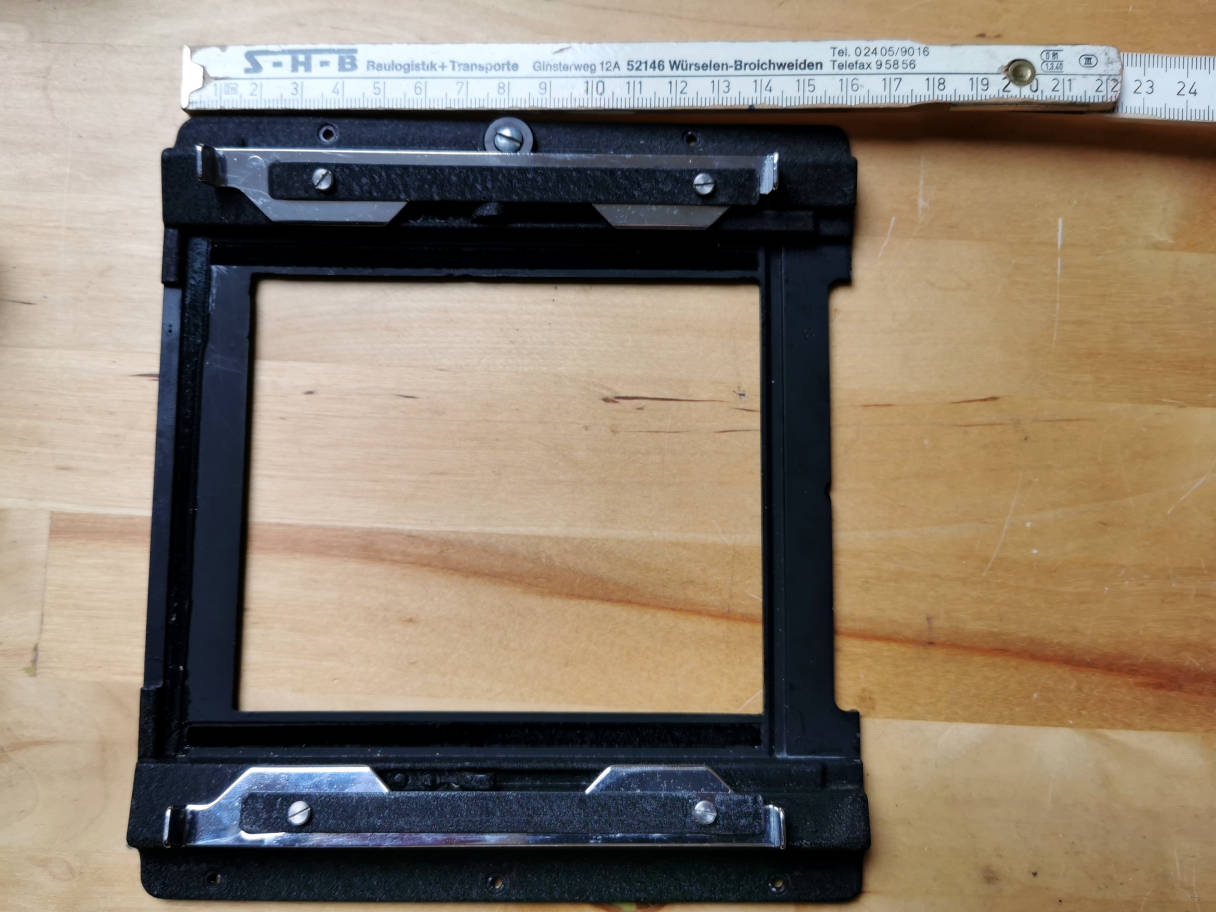
The spare part Graflok frame.
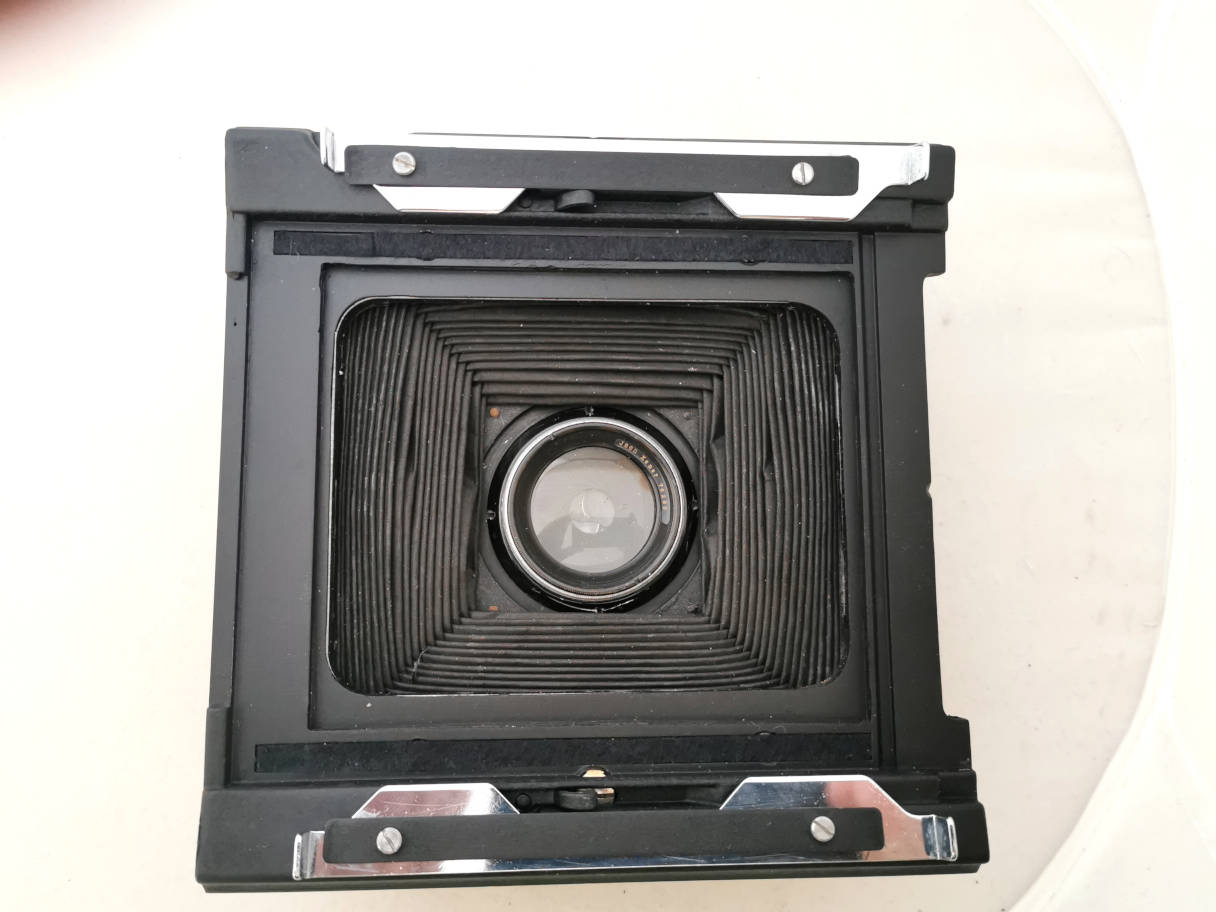
Camera with Graflok back adapted.

Seen from the right.
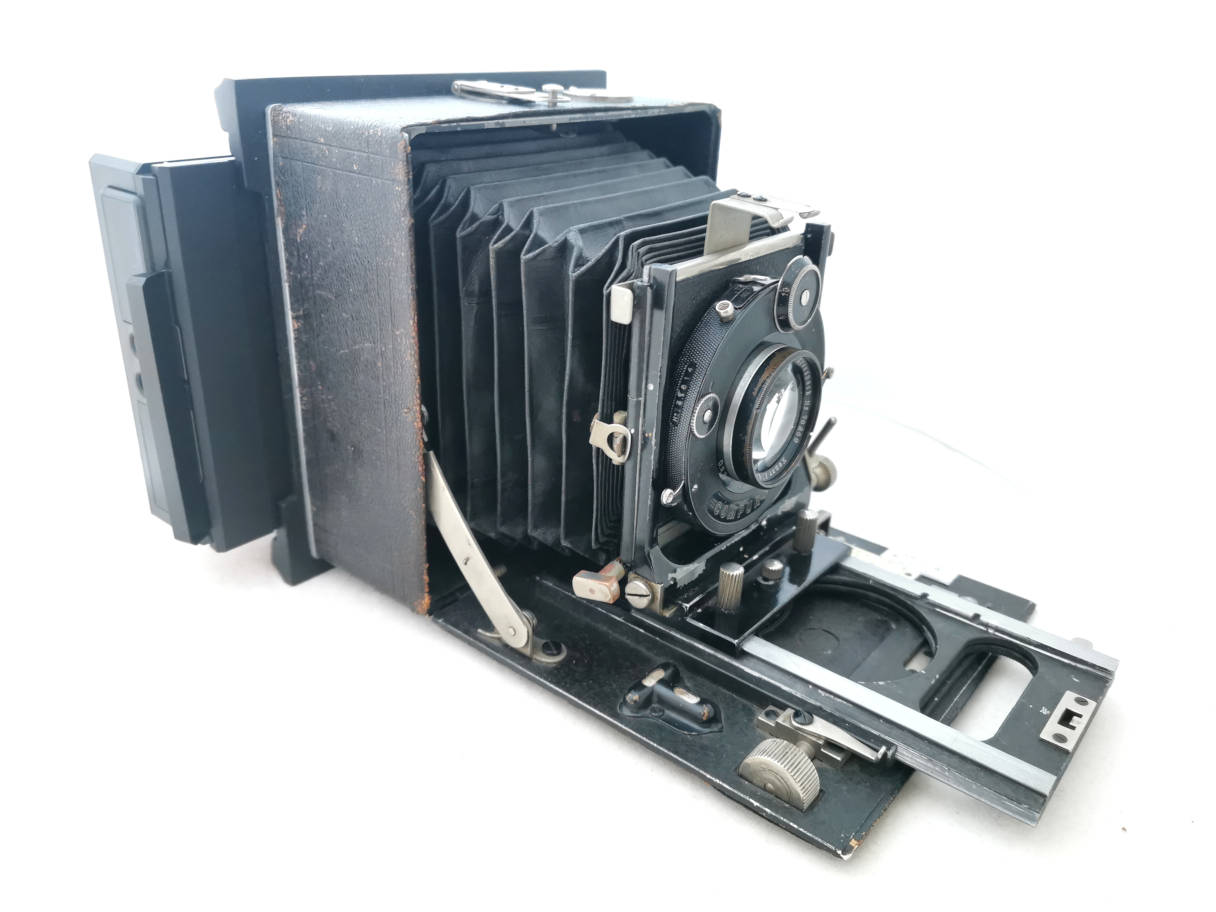
Left side. Lomo Graflok back attached.
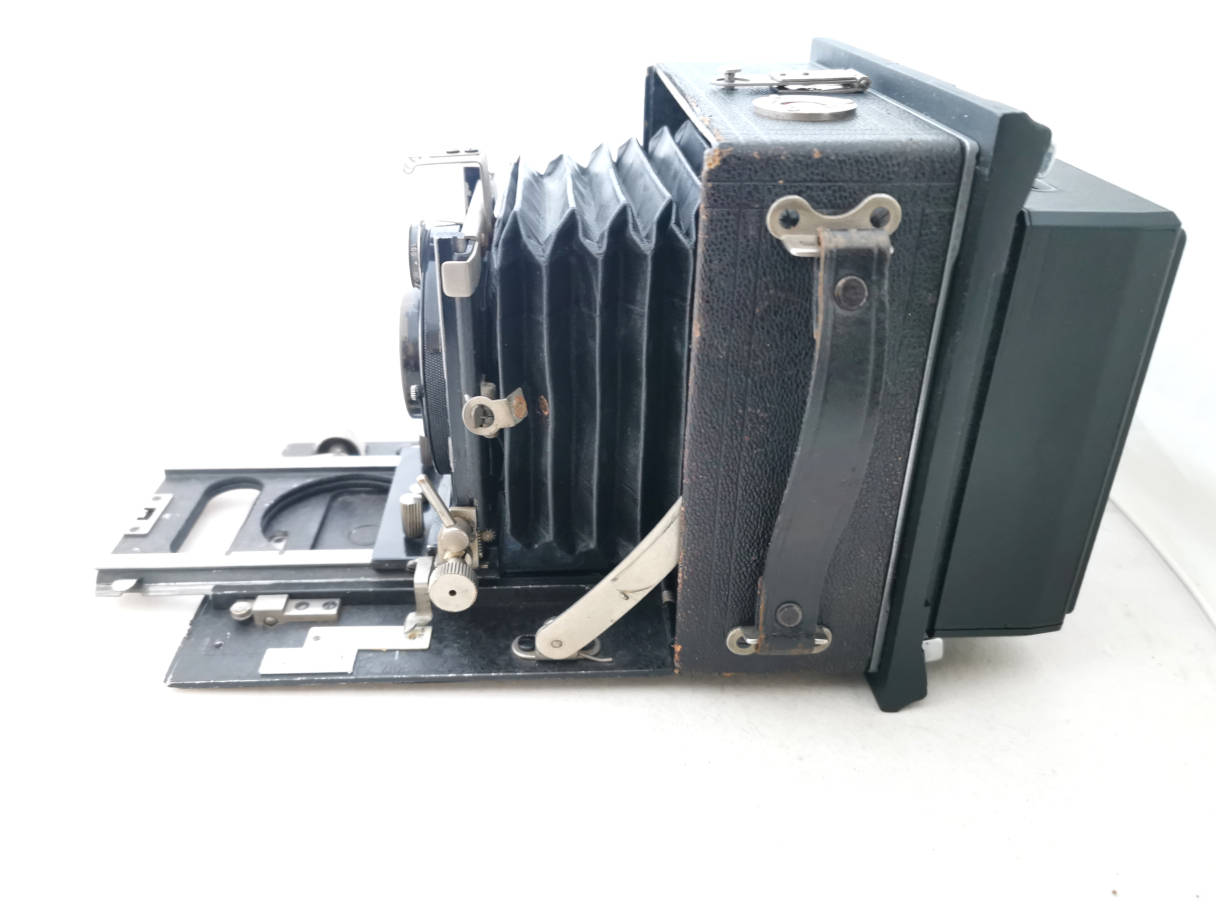
Right side, focussed to infinity, offset included.
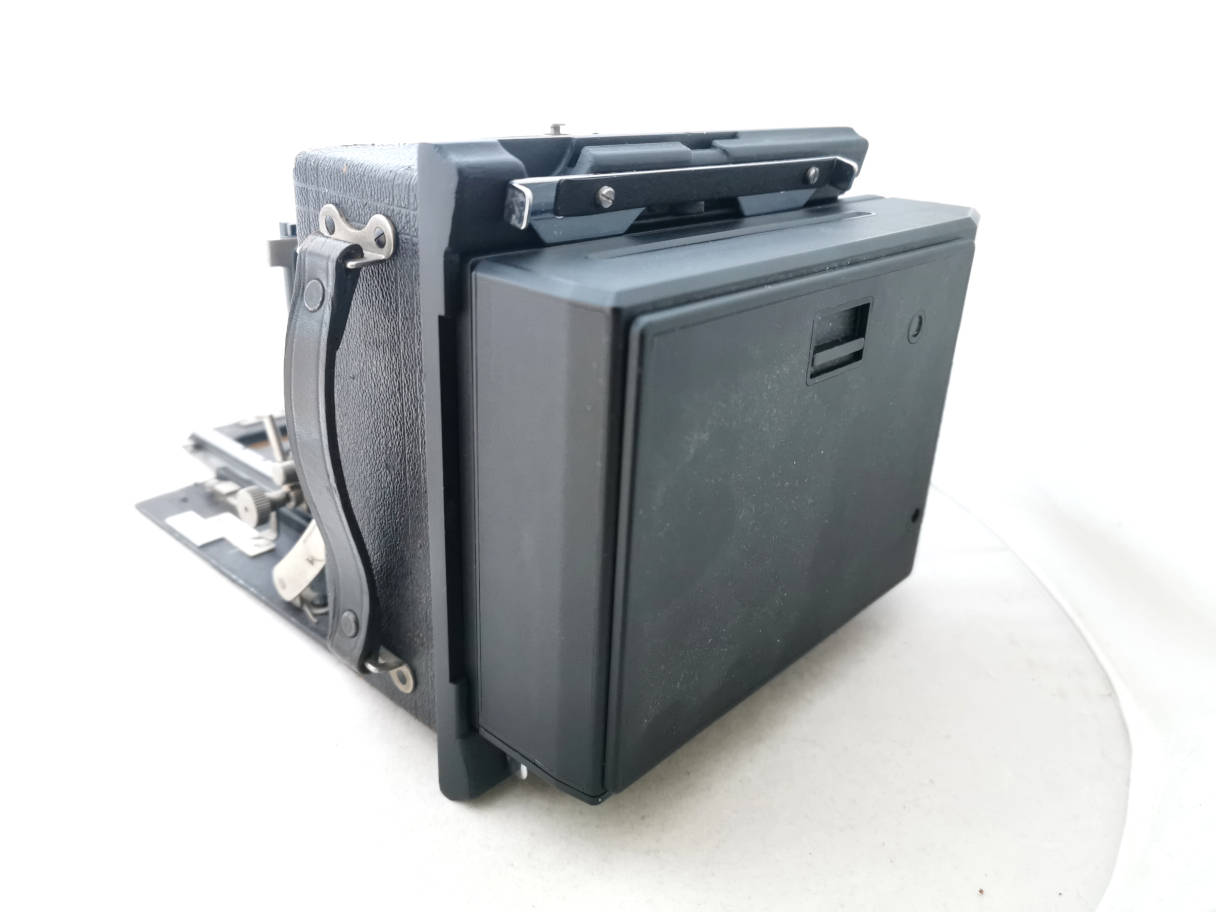
Seen from the back.
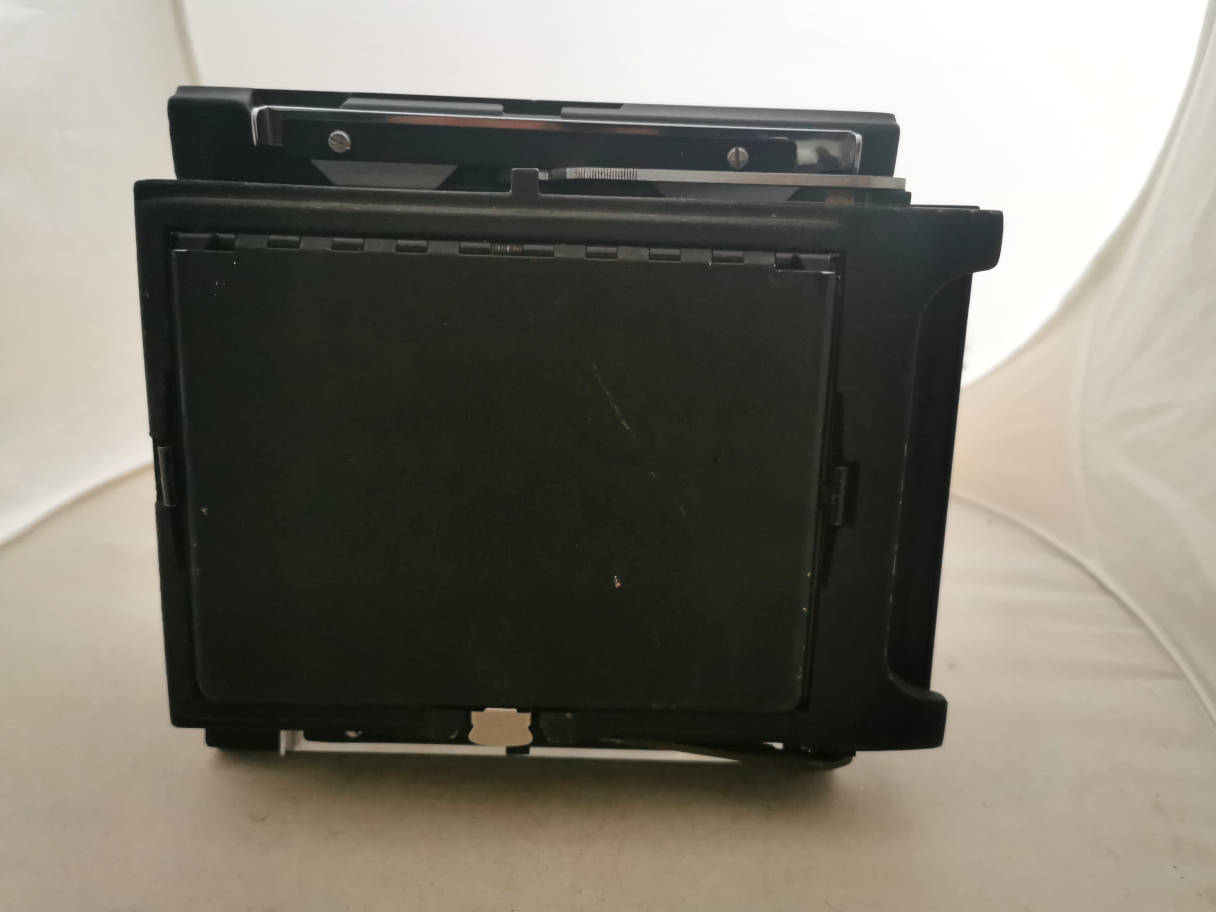
Camera with standard Graflok ground glass and Lomography spacer.
The back has an offset of about 25mm to create room for a dark slide.
This offset has to be taken into account when you focus via a ground
glass. So there is a spacer to be put under the gruond glass. The first
spacer was 19.5mm. This was obviously a bit too short. Newer backs are
delivered with a 21.5mm spacer.
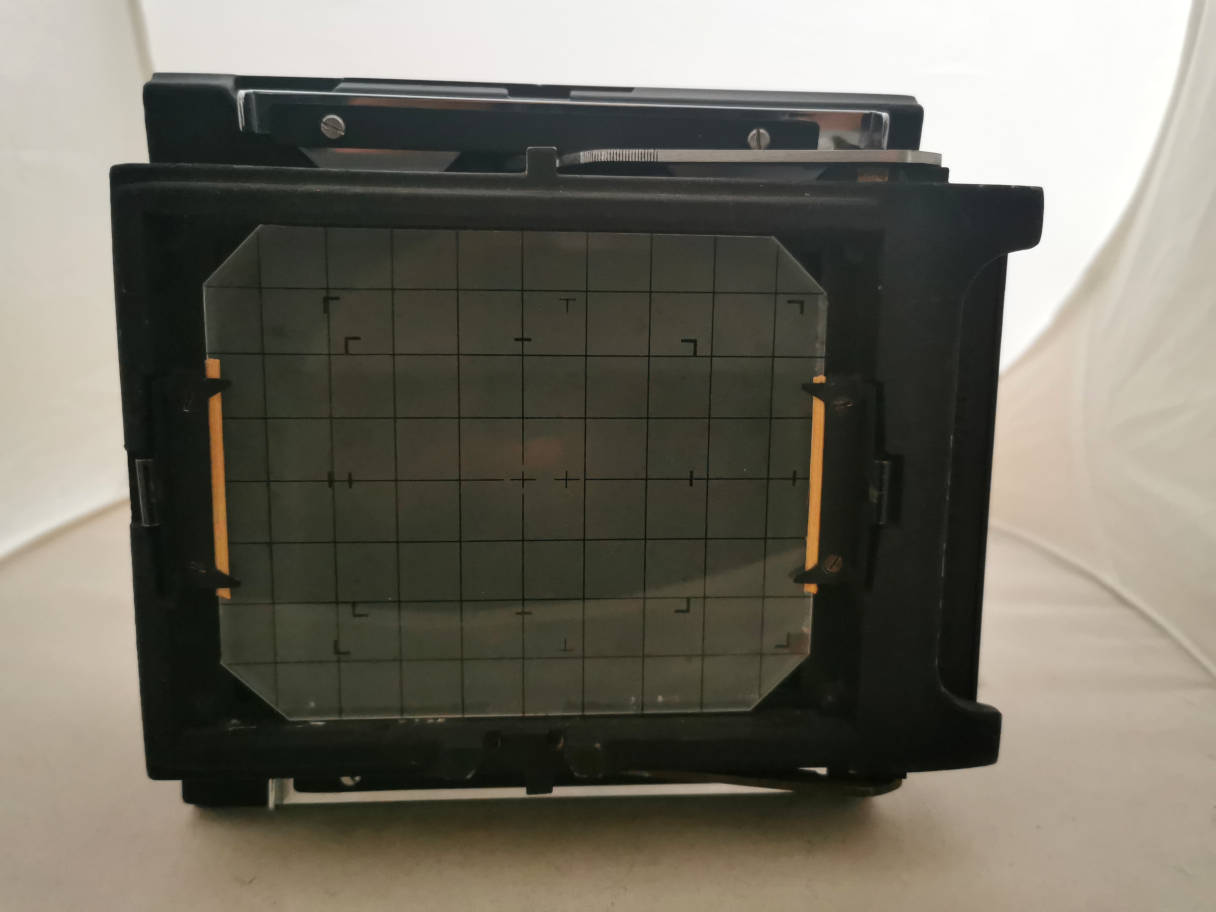
Hood taken off.
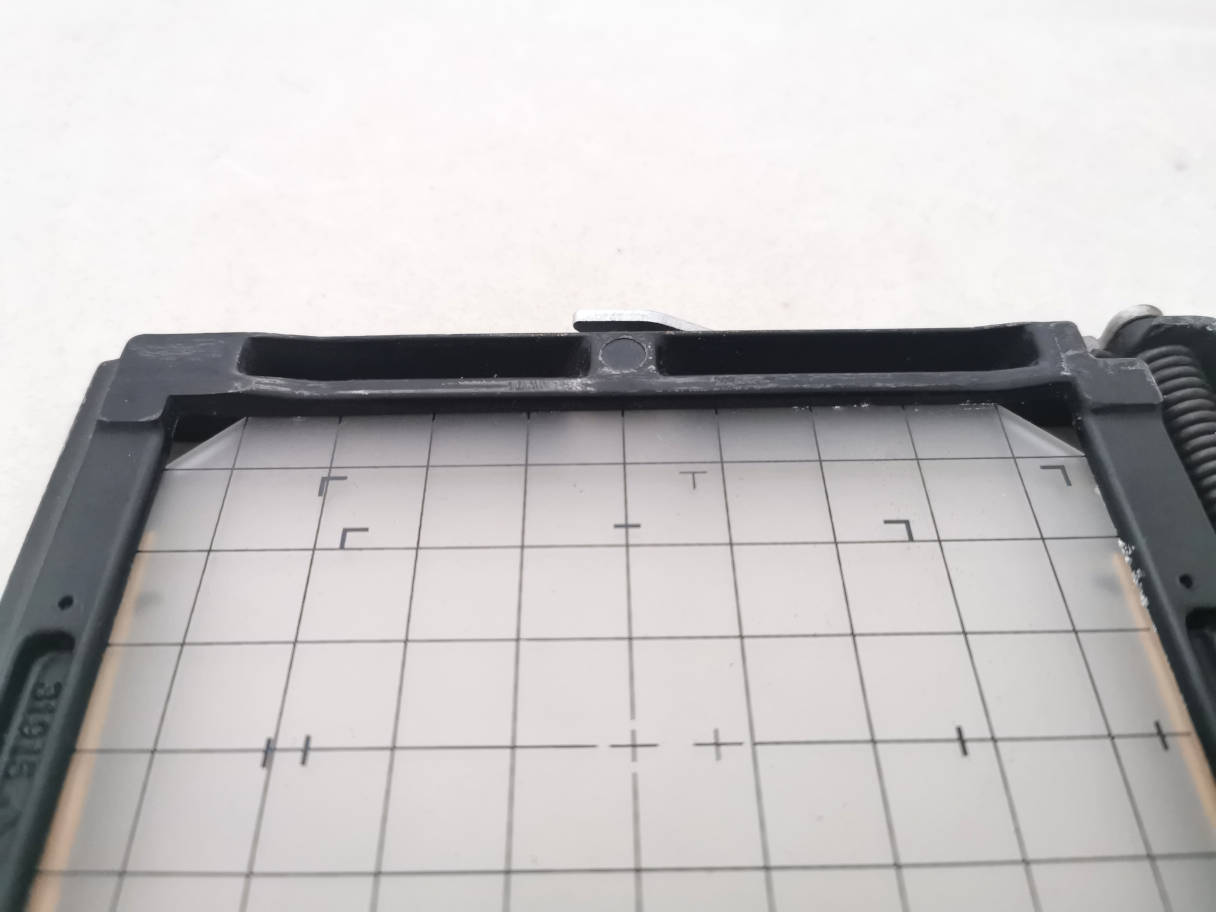
The Graflok ground glas sits in a metal frame which adds another 4mm of distance.
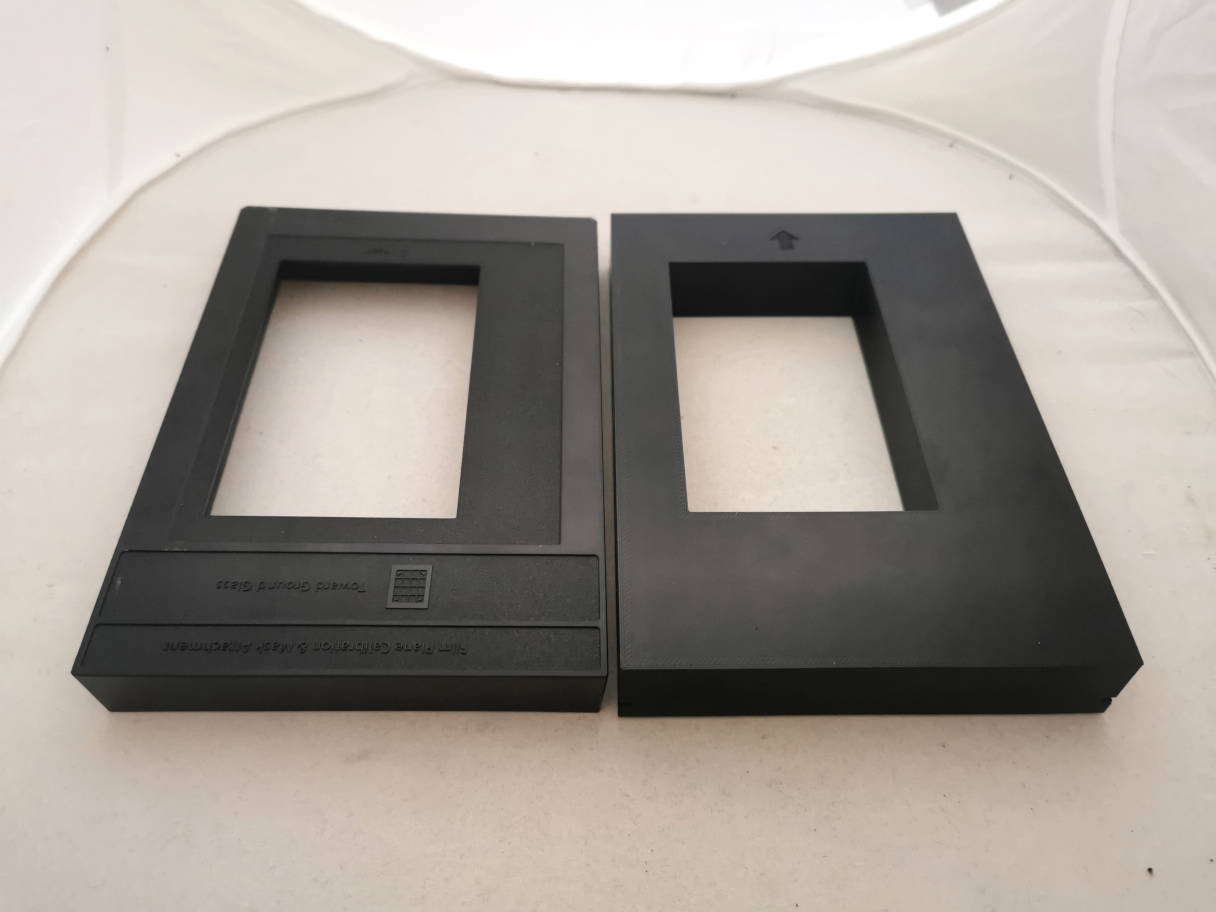
To take a photo you have to put the Graflok ground glass first, then
introduce the spacer under the ground glass (which is a bit of a pain),
focus, take spacer and ground glass off and then put the back. So it
would be much easier to have a special ground glass which has the
offset. You just swap it with the back. This is a 3D printed frame for
such a ground glass.
It has 4mm more height than the spacer to take the 4mm of the Graflok ground glass frame into account. The file is here: https://www.printables.com/model/85070-4x5-ground-glass-frame-for-use-with-a-lomography-i
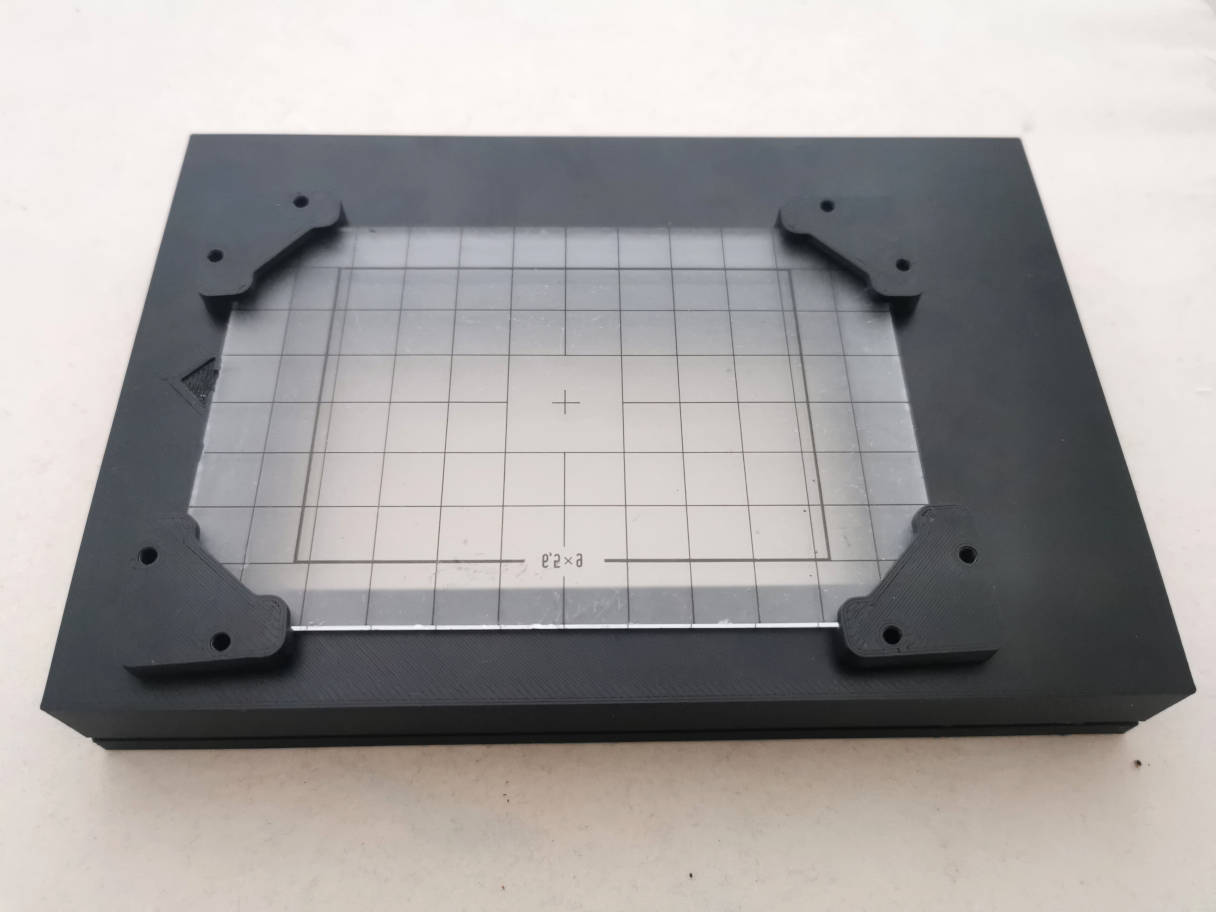
There are corner bits which could hold a ground glass. I know, the glass in the picture inversed...
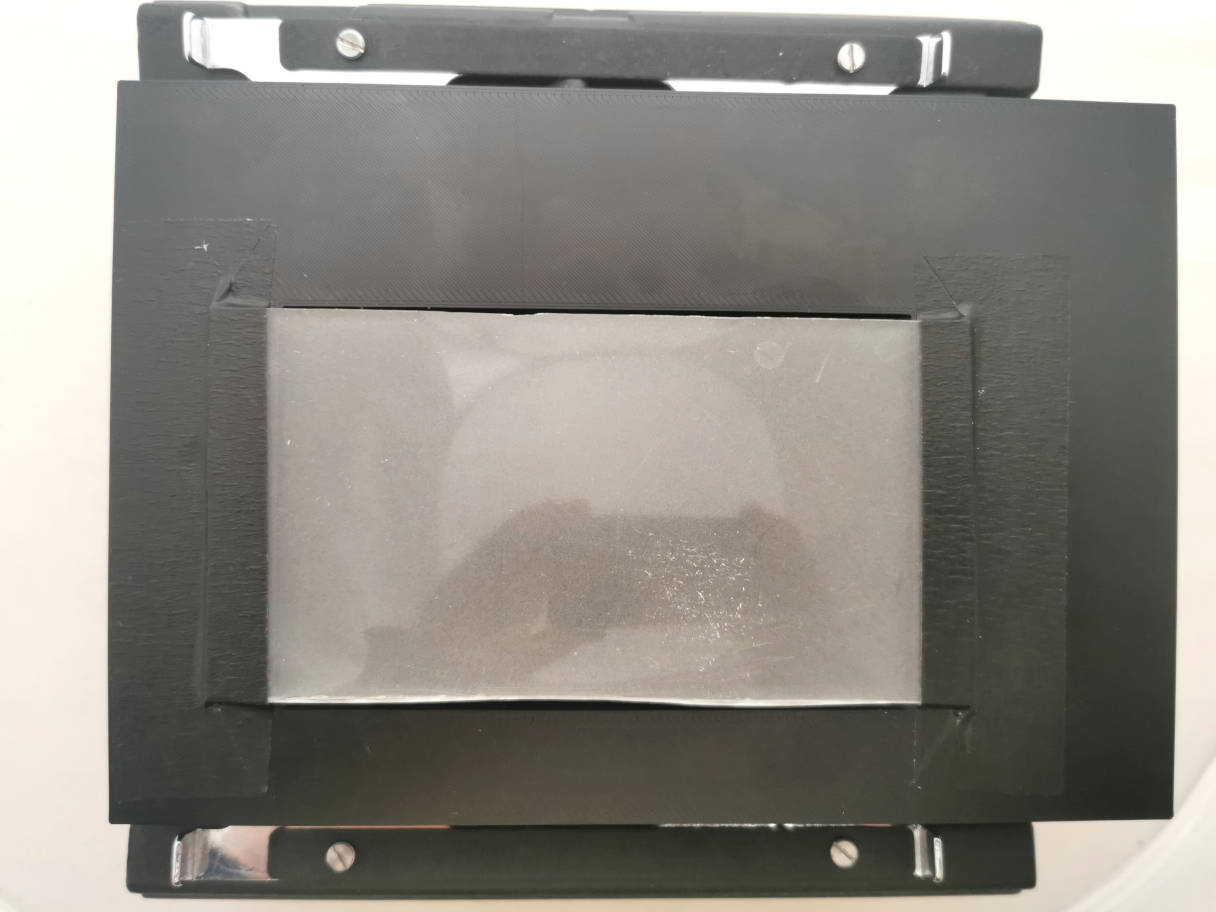
I chose an easy solution for the moment. I had a spare 6x12 acrylic
ground glass to control my 6x12 tinkering and taped it to the frame.
This will do for the moment.
It's a very nice camera,
easy to use. The rotating back is a big advantage.
It's lightweight seen its possibilities.
I have not taken any outside photos with it yet. It's too cold for the moment. But this will happen quite soon.












